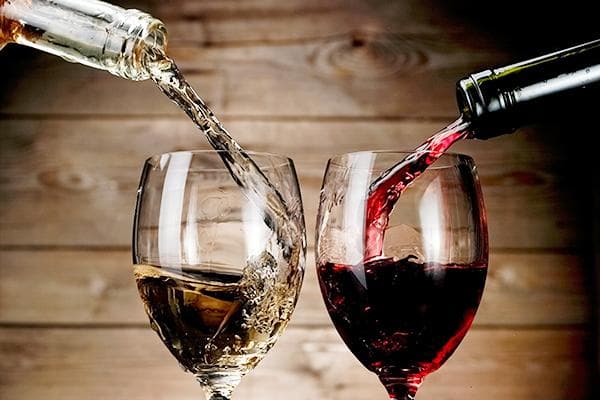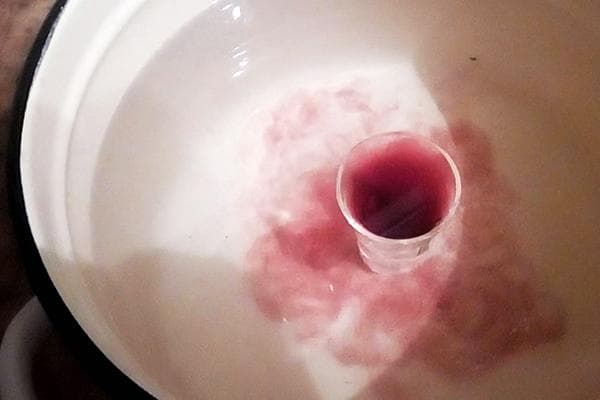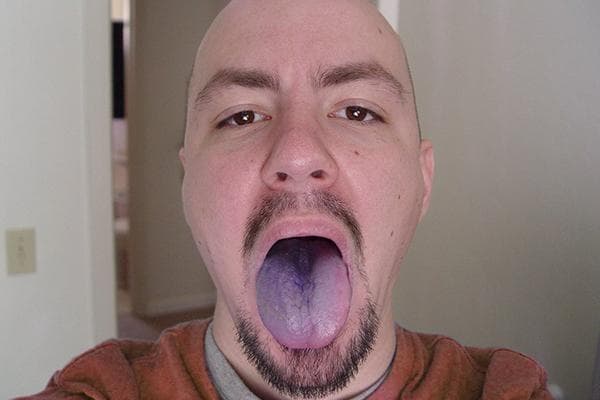How to check wine for naturalness and why traditional methods will not help?
Our readers often ask us to tell them how to check whether a wine is natural, since they have doubts about the quality of this product. Unfortunately, it is impossible to carry out any tests at home - to identify counterfeit products, you need to conduct research in the laboratory. However, there are quite a few popular methods of testing wine on the Internet using improvised means - in particular water and soda. We decided to look at them from a scientific point of view and explain why they show a false result.

Testing wine at home
For some reason, all common testing methods are focused on wine made from dark grapes. We were not able to find a single method that would allow us to test white wine.
Myth 1 - dissolution in water
This test is popularly considered the most reliable - it is used to determine the naturalness of a wine. To test, you need two containers - a glass of red wine and a bowl of clean water. If, after immersing the glass in a bowl, the wine “comes out” and colors the water, then it is made from “powder”.
However, if we consider such an experiment from a scientific point of view, it will turn out to be completely meaningless:
- Firstly, density is important here. Normally for dry wines this figure is 993 kg/m3, near water - 997 kg/m3, for semi-sweet and sweet wines - over 1000 kg/m3. That is, dry wines are initially lighter, so water easily displaces them from the glass, filling the vacated space. Semi-sweet and sweet wines are initially heavier, so it is difficult for water to displace them to the top.
- Secondly, the temperature of all liquids is important, because this parameter affects the density. The colder the wine and water, the denser they are, and vice versa. Well-chilled dry wine will not be displaced by water, which is at room temperature, but heated sweet wine will instantly “come out” of the glass and color the water.
- Thirdly, an important factor is the disturbances and vibrations created by the hand when immersing the glass. They significantly affect the behavior of wine in water.
- Fourthly, there is a process called diffusion - mixing of liquids at the molecular level. If a glass of very sweet and, therefore, dense wine is left in a container of water for at least a day, you can see that the water will turn red.
Conclusion: this method is not suitable for determining the quality of wine at home. It does not indicate either the naturalness or the “powdery” nature of the wine and can only be used as table entertainment if guests suddenly get bored.
You can watch the experiment with water in the video of the famous wine expert Denis Rudenok.
Myth 2 - color change
One popular way to test wine is to mix it with soda. According to the statements of people who practice this method, high-quality red wine will change color to blue, while counterfeit wine will retain its original color.
This theory is partly correct, because the color of wine is given by anthocyanins contained in the skins of blue grape varieties. These are pigments, the color of which largely depends on the acid-base balance of the environment:
- at pH 1.5-2 they are bright red;
- at pH 3.5-5 - purple;
- at pH 6.5-8 - blue;
- at pH 9 - green;
- at pH 10 - yellow.
As everyone knows from a school chemistry course, soda shifts the acid-base balance of solutions to the alkaline side. When it gets into a glass of wine, it acts in exactly the same way - the acid in the drink is neutralized, the pH becomes alkaline, and anthocyanins change color from red to blue. A similar process, although without the participation of soda, occurs during the ripening of blue berries - blueberries, blueberries, blackberries, elderberries, mulberries and others. At first they become sour and red, and as they ripen they lose their acidity and turn blue.
Conclusion: you can check red wine with soda, but turning the drink blue is not an indicator of its quality. The change in color only indicates the presence of anthocyanins in the wine. What kind of anthocyanins these are - natural grape pigments or anthocyanin food coloring (for example, E163ii) - can only be determined by specialists after a series of laboratory tests.
Myth 3 - coloring properties
There is an opinion that if wine stains the tongue, it means that it is not natural, but consists of water, alcohol, flavorings and dyes. However, blue grapes have exactly the same feature - it is enough to eat a few berries for your teeth and tongue to “blacken”. And in ancient times, grape cake was used to give fabrics a lilac and blue tint.
The reason for color metamorphoses lies in the already mentioned anthocyanins. Since the acid-base balance in the human mouth is shifted to the alkaline side, anthocyanins turn from red to blue and in this form are fixed on tooth enamel and on the tongue.A similar process occurs when a person eats blueberries, blackcurrants, blackberries, and chokeberries.
Interesting fact: scientists have long learned to isolate anthocyanins from plants and now widely use them to create food and technical dyes.
Conclusion: darkening of the tongue and teeth indicates the presence of anthocyanins in the wine, but does not indicate how they got there - naturally during the fermentation of grapes or artificially when creating counterfeit. The origin of pigments can only be determined in a laboratory.
If you bought wine, the quality of which is in doubt, it would be correct to send it for analysis to a certified laboratory or seek help from Rospotrebnadzor. It is impossible to test wine at home.


